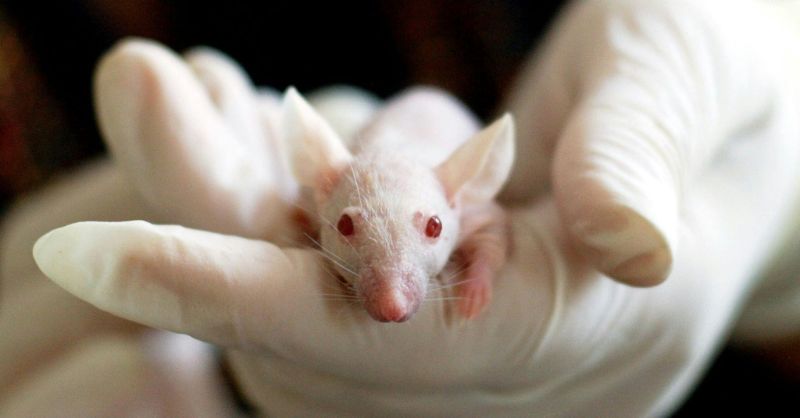
In a groundbreaking study, an international team of researchers has successfully generated a living mouse using stem cells driven by genetic tools from ancient unicellular organisms.
This achievement, published in Nature Communications by scientists from Queen Mary University of London and The University of Hong Kong, opens a new chapter in our understanding of stem cell biology and the evolutionary origins of animal life. By utilizing a gene found in choanoflagellates—single-celled organisms closely related to animals—scientists have reshaped fundamental assumptions about how complex life evolved.
This research not only pushes the boundaries of stem cell science but also provides insights into how multicellular organisms may have emerged from their unicellular ancestors. The implications of these findings extend to evolutionary biology, regenerative medicine, and biotechnology.
Rediscovering the roots of pluripotency
Pluripotency is a defining feature of stem cells, enabling them to develop into any cell type within a living organism. This characteristic is primarily driven by specific genes, such as Sox and POU, which were previously thought to have evolved exclusively in animals. However, the study revealed that choanoflagellates—the closest living relatives of animals—also possess primitive versions of these genes.
The researchers leveraged this genetic similarity by incorporating a choanoflagellate-derived gene into mouse stem cells. Surprisingly, the modified stem cells not only retained their pluripotency but also gave rise to a fully formed mouse. This breakthrough offers a rare glimpse into the evolutionary continuum, connecting modern animals to their single-celled ancestors.
The experiment: From ancient genes to modern mice
The research involved isolating a gene from choanoflagellates and integrating it into the genome of mouse stem cells. This gene is an ancient relative of the Sox gene, a master regulator of stem cell pluripotency.
Through meticulous laboratory work, the team observed that the modified mouse stem cells behaved indistinguishably from normal ones. These cells were then used to generate a fully developed mouse, marking the first time a vertebrate organism has been created using stem cells activated by genetic tools from a unicellular ancestor.
Implications for evolutionary biology
The findings have profound implications for understanding the evolution of multicellularity. Choanoflagellates, often described as “living fossils,” occupy a unique position on the evolutionary tree. They offer a glimpse into the genetic landscape of the last common ancestor of animals and their unicellular relatives.
The presence of pluripotency-driving genes in choanoflagellates suggests that these tools were not initially designed for the development of multicellular organisms. Instead, they may have been co-opted by early animals to regulate the differentiation of cells in increasingly complex body plans.
This evolutionary flexibility underscores how ancient genetic mechanisms can be repurposed to drive the emergence of new biological innovations.
Applications in regenerative medicine
Beyond its evolutionary significance, the study also has potential applications in regenerative medicine and biotechnology. Understanding the fundamental mechanisms of pluripotency could lead to more efficient methods of reprogramming cells for therapeutic purposes.
For instance, if ancient genetic tools can activate pluripotency, they might offer simpler or more robust alternatives to current stem cell technologies. These insights could pave the way for advances in tissue engineering, organ regeneration, and the treatment of degenerative diseases.
Ethical and philosophical considerations
The experiment also raises important ethical and philosophical questions. By demonstrating that ancient genes can create modern organisms, the research blurs the boundaries between evolutionary epochs and challenges traditional notions of what constitutes “human-made” versus “natural.”
It invites reflection on the nature of life itself: If the genetic tools for pluripotency predate animals, does this imply that the potential for complexity was always inherent in simpler forms of life? And what does this mean for our understanding of humanity’s place in the evolutionary story?
What we think about the update
This research is not an isolated discovery but part of a broader effort to understand the genetic roots of life on Earth. The findings complement studies on other ancient genes and their roles in modern biology, reinforcing the idea that evolution often builds on pre-existing frameworks rather than starting from scratch.
In a time when synthetic biology and genetic engineering are advancing rapidly, understanding the evolutionary origins of these tools is more important than ever. It allows scientists to approach innovation with a deeper appreciation of nature’s design principles, potentially unlocking new ways to solve pressing global challenges.
The experiment not only demonstrates the continuity of life’s genetic machinery but also exemplifies the power of interdisciplinary research. By combining insights from genetics, developmental biology, and paleontology, the researchers have illuminated a key chapter in the story of life on Earth.
Looking ahead, the findings offer both inspiration and caution. While the potential applications are exciting, the ethical and ecological implications of manipulating ancient genetic tools must be carefully considered. This balance between exploration and responsibility will define the next era of biological research.
The creation of a living mouse using ancient genetic tools from choanoflagellates is a scientific milestone that bridges billions of years of evolutionary history. It challenges conventional wisdom about the origins of stem cells, underscores the ingenuity of nature’s genetic toolkit, and opens new avenues for research in medicine and biotechnology.
Ultimately, this study is a reminder of how much we still have to learn about life’s deep history—and how these lessons can inform the future of science and society.



